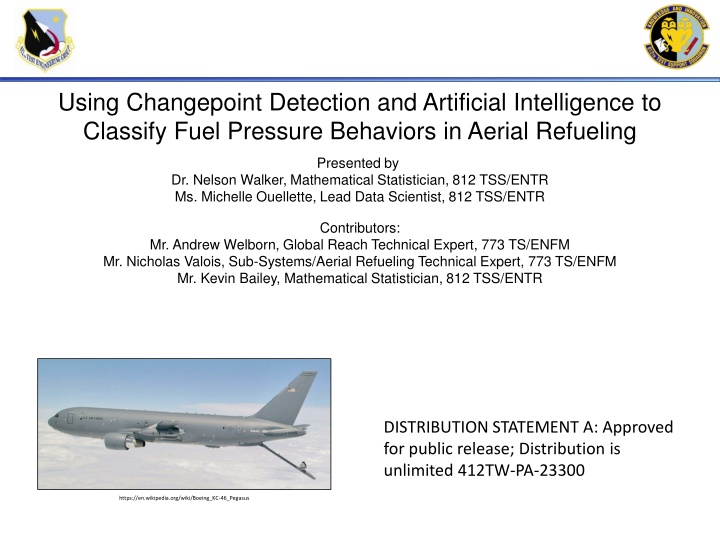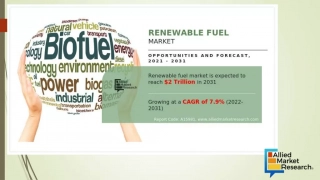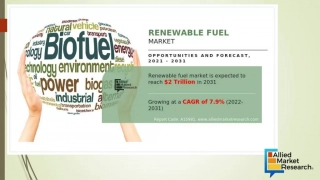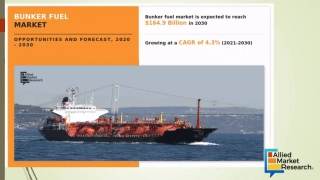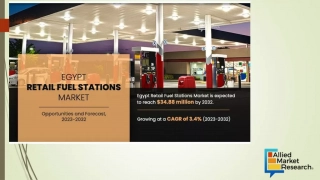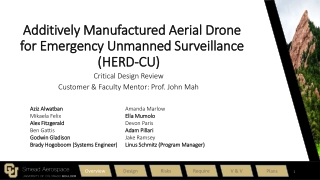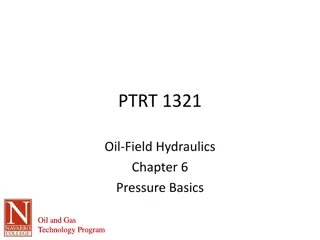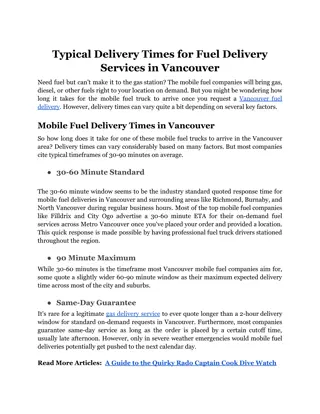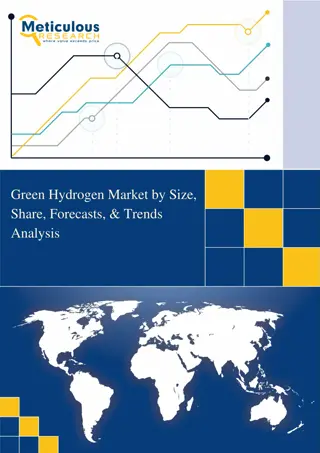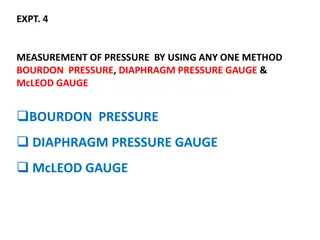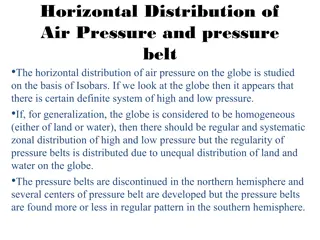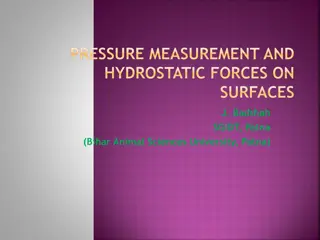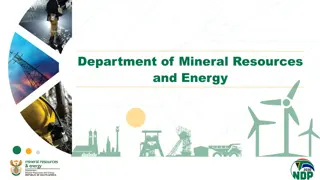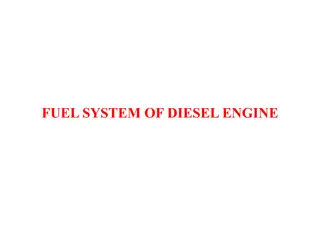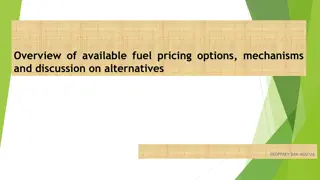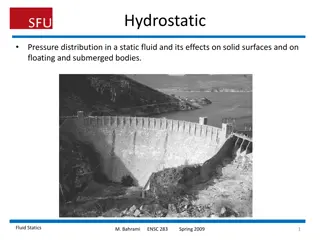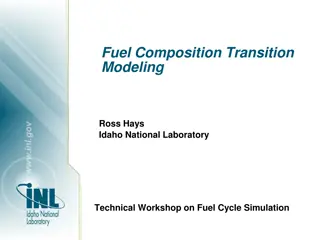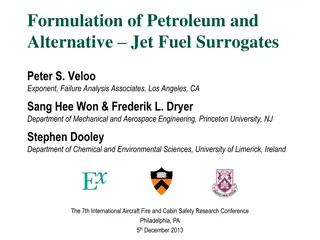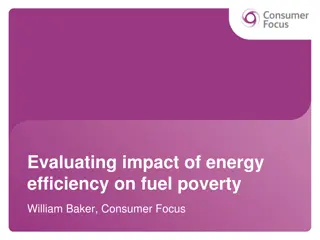AI Fuel Pressure Classification in Aerial Refueling
Using Changepoint Detection and AI to classify fuel pressure behaviors in aerial refueling. An AI system called FACS is introduced to automate this process, aiming to save time and effort in data analysis. The system employs unsupervised machine learning algorithms to detect fuel pressure behaviors without prior labeling, providing a more efficient and reproducible solution compared to manual classification methods.
Download Presentation

Please find below an Image/Link to download the presentation.
The content on the website is provided AS IS for your information and personal use only. It may not be sold, licensed, or shared on other websites without obtaining consent from the author.If you encounter any issues during the download, it is possible that the publisher has removed the file from their server.
You are allowed to download the files provided on this website for personal or commercial use, subject to the condition that they are used lawfully. All files are the property of their respective owners.
The content on the website is provided AS IS for your information and personal use only. It may not be sold, licensed, or shared on other websites without obtaining consent from the author.
E N D
Presentation Transcript
Using Changepoint Detection and Artificial Intelligence to Classify Fuel Pressure Behaviors in Aerial Refueling Presented by Dr. Nelson Walker, Mathematical Statistician, 812 TSS/ENTR Ms. Michelle Ouellette, Lead Data Scientist, 812 TSS/ENTR Contributors: Mr. Andrew Welborn, Global Reach Technical Expert, 773 TS/ENFM Mr. Nicholas Valois, Sub-Systems/Aerial Refueling Technical Expert, 773 TS/ENFM Mr. Kevin Bailey, Mathematical Statistician, 812 TSS/ENTR DISTRIBUTION STATEMENT A: Approved for public release; Distribution is unlimited 412TW-PA-23300 https://en.wikipedia.org/wiki/Boeing_KC-46_Pegasus
Background Aerial refueling tankers must supply fuel at a constant pressure to receiver aircraft within safety and efficiency tolerances. ATP-3.3.4.5 contains the AR standards for fuel pressures Fuel pressure is highly stochastic, affected by flight conditions, maneuvers, and equipment configuration.
Background Evaluation criteria include the presence of oscillatory behavior, the number of nuisance disconnects, and the max fuel pressure for steady state and transient behaviors. Evaluation relies on calculating metrics (e.g., proportion of refueling time in oscillatory state) and traditional statistical inference (e.g., expected maximum fuel pressure spike). Metrics and inference depend on accurately and consistently identifying where different fuel pressure behaviors begin and end within a data-stream. Manual fuel pressure classification using engineering judgement is time intensive and not reproducible across engineers, tankers, and receivers. Previous efforts to apply traditional statistical methods to automatically classify fuel pressure behavior in a consistent, reproducible, and defensible manner have been unsuccessful. The crux of the problem is identifying the beginning and end of fuel pressure spikes and oscillatory behavior within a data-stream and then correctly classifying them as such. Data Segment Engineer 2 Engineer 1
Background Large analysis backlog (approx. 30 data packages, each consisting of one tanker/receiver pairing). Expected to take approx. 280 man-hours/package (8,400 man-hours total; assuming that fuel pressure behavior is manually classified, and statistical analysis proceeds as usual). Combined test force (CTF) waiting to publish data packages until a method is developed to accomplish classification in a repeatable, defensible manner. Collaboration underway between Stat Home Office, CTF SMEs and Data Science section to save time, effort, and money. High interest at the CTF from all levels. Data Segment Engineer 2 Engineer 1
Fuel-Pressure AI Classification System (FACS) Step 1. ImplementUnsupervised Machine Learning Changepoint Detection Algorithm "Unsupervised" in this context means that the fuel pressure data have not been labeled with the proper fuel pressure classification for each data point (the data doesn t include answers). We also don t know where behaviors start and stop. The goal of many unsupervised machine learning algorithms is to divide observations into homogeneous groups, called "clusters" or "segments" without needing supervision (without knowing the right grouping). Pruned Exact Linear Time (PELT) changepoint detection algorithm identifies when the mean and variance of a time series data stream changes in some way (using the "changepoint" package in R). Gamma likelihood used as a cost function with BIC as a penalty term. Changepoints chosen to optimize the penalized cost function from left to right. cpt.meanvar(my.data[,col_noise], penalty="BIC", method="PELT", test.stat="Gamma", class=TRUE, shape=shape.par) 1. U
Fuel-Pressure AI Classification System (FACS) Step 2. Craft an Expert System (ES) to Interpret Changepoints and Classify Segments Highly collaborative and iterative effort with SMEs and other experts at the CTF. Expert System: An AI system that emulates the decision-making ability of an expert. Rules-based set of logic used to classify fuel pressure behavior of one or more segments of the overall time-series stream in an interpretable way. Based on evaluation criteria, definitions of various states, and statistical properties (e.g., mean, min, max, left/right edge values, general shape). Example Oscillation definition Range in fuel pressure between trough and crest is greater than x psig and does not drop below y psig of difference in range for at least z cycles. Spikes last fewer than z cycles.
FACS ES Workflow Type 1 Above safety threshold for longer than x seconds at a time Type 2 Above safety or below efficiency threshold for shorter than x seconds at a time Type 3 A max difference between troughs and crests of at least y psig. Type 4 A max difference between troughs and crests of less than y psig and more than z psig. Spool-up The first w seconds before reaching a certain pressure level Steady State Relatively constant behavior lasting longer than v seconds at a time. Left-Overs Data that doesn t fit into any other category.
FACS Generalizable Across Platforms Tanker A, Receiver 1 1. Raw Data 2. Apply Unsupervised ML Algorithm 4. Relevant Output: Ready to Continue Analytics 3. Apply Expert System AI
FACS Generalizable Across Platforms Tanker A, Receiver 1 A Closer Look
FACS Generalizable Across Platforms Tanker A, Receiver 2 1. Raw Data 2. Apply Unsupervised ML Algorithm 4. Relevant Output: Ready to Continue Analytics 3. Apply Expert System AI
FACS Generalizable Across Platforms Tanker B, Receiver 3 1. Raw Data 2. Apply Unsupervised ML Algorithm 4. Relevant Output: Ready to Continue Analytics 3. Apply Expert System AI
Impact and Future Work Impact Classification becomes consistent, defensible, accurate, repeatable. Enables agile workforce (data can be leveraged for future projects). Frees the SMEs and engineers to do additional work. Early estimates say this method could save approx. 210 man-hours per data package while clearing the backlog and approx. 6,300 man-hours total (approx. $15k/package -> $454k total). Making the impossible, possible. Future Work Preparing to conduct operational test of the FACS and build out the remainder of the analysis pipeline. Identifying conditions that lead to different undesirable fuel pressure behaviors.
Acronyms AFB Air Force Base AI Artificial Intelligence AR Aerial Refueling CTF Combined Test Force DoD Department of Defense DoDM Department of Defense Manual DTIC Defense Technical Information Center ENFM Sub-systems Flight ENTR Statistical Methods Flight ES Expert System FACS Fuel-pressure AI Classification System FLTS Flight Test Squadron lb(s) pound(s) ML Machine Learning NATO North Atlantic Treaty Organization NISPOM National Industrial Security Program Operating Manual PELT Pruned Exact Linear Time psig pounds per square inch gauge sec - seconds SME Subject Matter Expert TS Test Squadron TSS Test Support Squadron US United States
References Aronson, J. E. (2003). Expert Systems. In H. Bidgoli (Ed.), Encyclopedia of Information Systems (pp. 277-289). Elsevier. Hayes-Roth, F., Waterman, D. A., & Lenat, D. B. (1983). Building Expert Systems. Massachusetts, USA: Addison-Wesley Publishing Company. Killick, R., & Eckley, I. A. (2014). changepoint: An R Package for Changepoint Analysis. Journal of Statistical Software, 58(3), 1-19. doi:10.18637/jss.v058.i03 Killick, R., Fearnhead, P., & Eckley, I. A. (2012). Optimal Detection of Changepoints With a Linear Computational Cost. Journal of the American Statistical Association, (500), 1590-1598. doi:10.1080/01621459.2012.737745 NATO Standard Allied Technical Publication 3.3.4.2, Air-to-Air Refueling, Edition D, Version 1, April 2019. NATO Standard Allied Technical Publication 3.3.4.2, US Standards Related Document, Edition D, January 2023. NATO Standard Allied Technical Publication 3.3.4.5, Air-to-Air (Aerial) Refueling Equipment; Boom-Receptacle System and Interface Requirements, Edition B, Version 1, June 2022.
